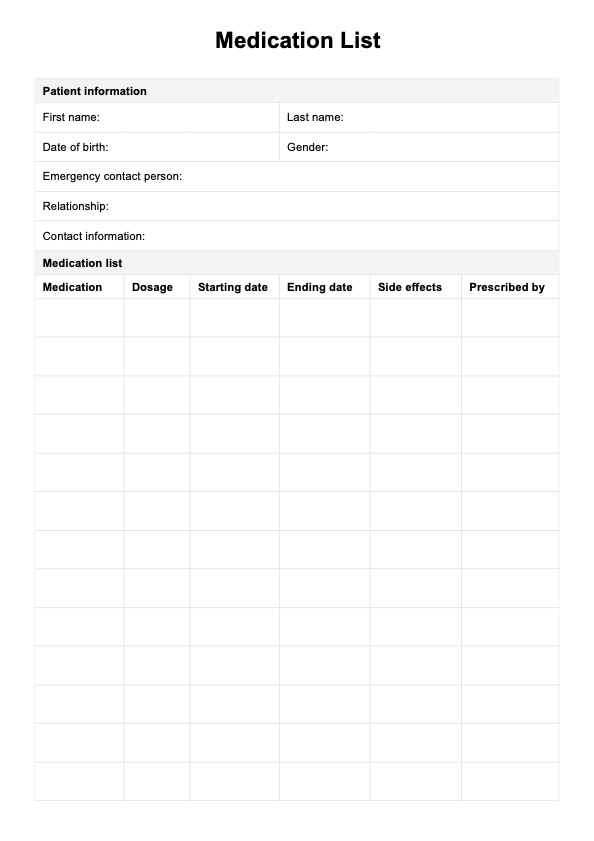Use a Medication List Template when assessing a patient's current prescriptions, allergies, and adherence to treatment. This helps prevent adverse drug interactions and ensures accurate medical history documentation.

Medication List Template
Ensure proper treatment tailored to patient backgrounds and health needs with our Medication List Template.
Medication List Template Template
Commonly asked questions
It is recommended that only healthcare practitioners fill out the list to ensure that the document is authorized. However, you can ask your patients what medications they have used in the past or what they are currently using and receive input this way.
It may include the exact dosage, specific or personalized instructions, and when the patient used the medication. You can also include this information if the patient experiences any troubling symptoms or allergies to the medication.
EHR and practice management software
Get started for free
*No credit card required
Free
$0/usd
Unlimited clients
Telehealth
1GB of storage
Client portal text
Automated billing and online payments











